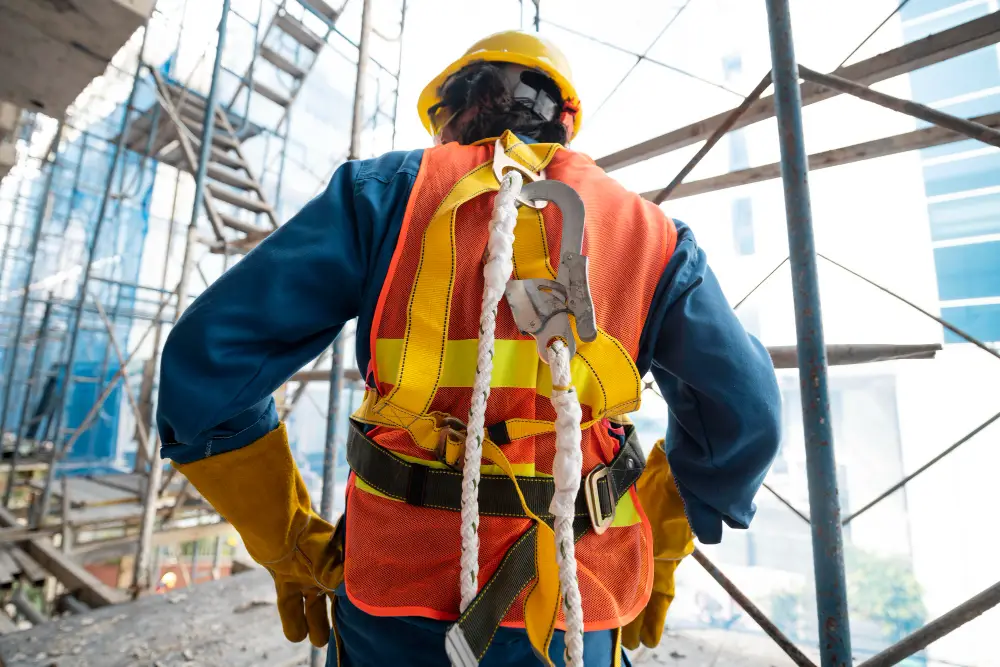Last updated on
Construction sites are dangerous places. With heavy machinery, hazardous materials, and the potential for accidents at every turn, it’s important to prioritize safety on any construction site.
Not only is it the legal responsibility of employers to provide a safe work environment for their employees, but it also ensures the well-being of everyone involved in the project. From workers to visitors, proper safety measures must be implemented and followed at all times.
In this blog post, we will discuss six ways to ensure construction site safety and how these measures can help prevent accidents and injuries on the job. So let’s dive in and learn more about keeping construction sites safe!
What's Inside
Have Emergency Medical Supplies

One of the most important ways to ensure construction site safety is by having emergency medical supplies readily available at all times. Accidents can happen on a construction site, and it’s crucial to have the necessary tools and equipment to treat injuries or illnesses immediately.
As highlighted by the team behind Saveritemedical, various types of medical supplies should be kept on-site, including first aid kits, emergency eyewash stations, and defibrillators.
These supplies should be regularly checked and restocked as needed to ensure they are always available in case of an emergency. Having these supplies readily accessible can significantly reduce the severity of injuries and potentially save lives.
Conduct Regular Safety Training and Education
Another crucial aspect of construction site safety is conducting regular safety training and education for all workers. This includes not only new hires but also existing employees who may need refresher courses. Safety protocols, emergency procedures, and the proper use of equipment should be covered in these training sessions.
Investing in ongoing safety education will not only improve the overall safety of the site but also help prevent accidents and injuries. It also shows a commitment to prioritizing the well-being of employees, which can boost morale and increase productivity. Safety training should be seen as an essential part of any construction project, rather than just a one-time requirement.
Implement and Enforce Safety Protocols

Having safety protocols in place is crucial, but they are only effective if they are consistently implemented and enforced. This means that all workers must follow these protocols at all times, without exception. Safety measures such as wearing hard hats, and harnesses, and following proper ladder and scaffolding procedures should be strictly enforced.
Construction site managers must also regularly assess the effectiveness of these protocols and make necessary updates or changes as needed. Consistent implementation and enforcement of safety protocols not only protect workers but also create a culture of safety on the site.
Keep the Site Clean and Organized
A clean and organized construction site is a safe construction site. Clutter, debris, and equipment lying around can be hazardous for workers, leading to slips, trips, and falls. It’s essential to keep the site clean and organized at all times, with designated areas for equipment storage and waste disposal.
Regularly sweeping and cleaning the site can also help identify potential hazards such as loose wires or uneven surfaces. Site managers should also ensure that proper signage is in place to warn workers of any potential dangers in the area. Maintaining a clean and organized site not only promotes safety but also improves efficiency and productivity.
Properly Maintain Equipment and Machinery
Equipment and machinery are essential for any construction project, but they can also pose significant risks if not properly maintained. Regular maintenance checks should be conducted on all equipment to ensure they are functioning correctly and without any defects that could cause accidents.
Workers should also be trained on the proper use and maintenance of equipment to prevent misuse or negligence. Any faulty equipment should be immediately repaired or replaced to avoid any potential hazards. Properly maintained equipment not only protects workers but also helps ensure the project stays on schedule and within budget.
Use Personal Protective Equipment (PPE)
Personal Protective Equipment (PPE) should be a standard requirement for all workers on a construction site. This includes items such as hard hats, safety goggles, gloves, and high-visibility clothing. PPE helps protect workers from potential hazards such as falling objects or debris, chemical spills, and loud noises.
Employers must provide appropriate PPE to their employees and ensure it is being worn at all times. Regular checks should also be done to make sure PPE is in good condition and replaced when necessary.
Making PPE mandatory on-site can significantly reduce the risk of injuries and promote a safe working environment for everyone involved. Overall, prioritizing the use of personal protective equipment is key to ensuring construction site safety.
Construction site safety is a crucial aspect of any construction project. By following these six ways to ensure construction site safety, employers can create a safer work environment for their employees and prevent accidents and injuries on the job.
Providing emergency medical supplies, implementing regular training and education, enforcing safety protocols, maintaining a clean and organized site, properly maintaining equipment and machinery, and using PPE are all essential steps in promoting a culture of safety on construction sites.
By prioritizing safety, employers not only fulfill their legal responsibilities but also show care and concern for the well-being of their workers.





